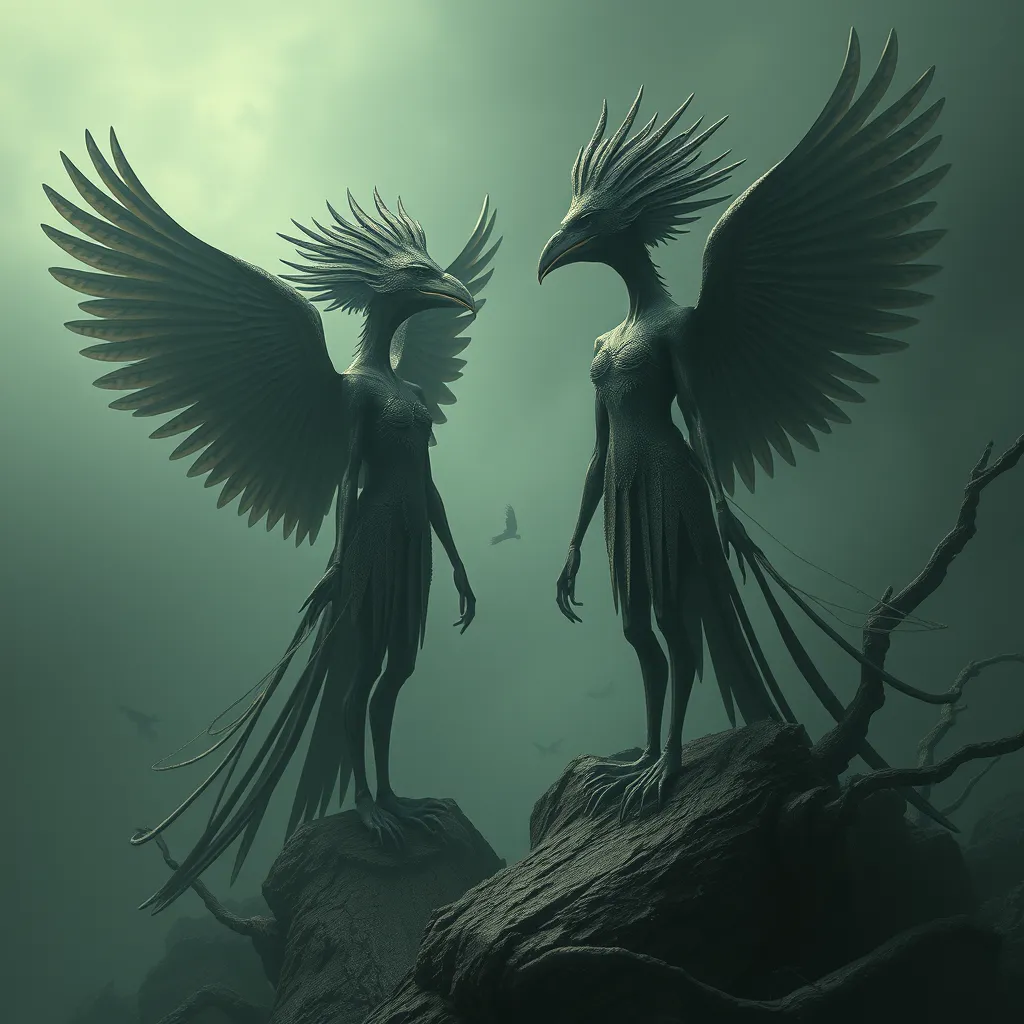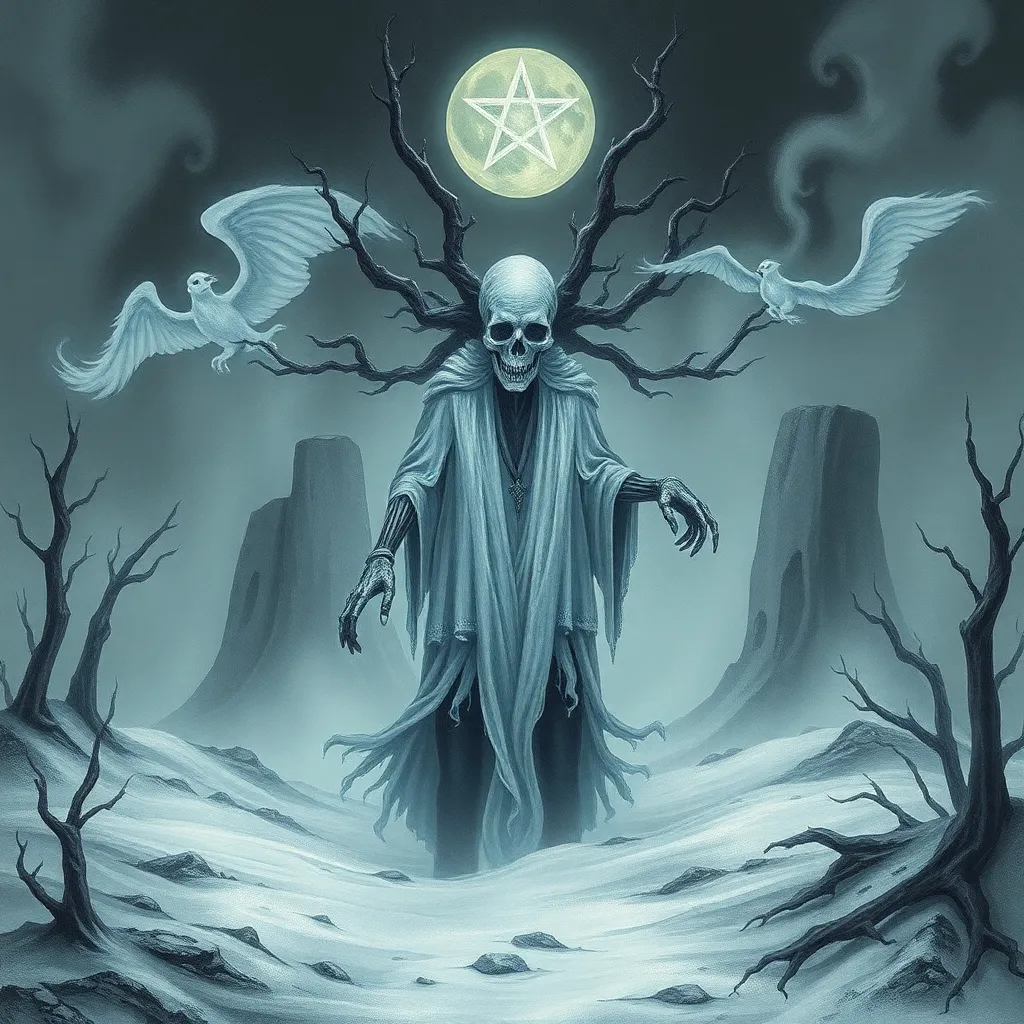The Bird-Women of Yoruba Mythology: Are They Related to Harpy Legends?
I. Introduction
Yoruba mythology is a rich tapestry of stories, deities, and cultural beliefs that have shaped the lives of the Yoruba people in Nigeria and beyond. It encompasses a wide array of figures, each with their own significance and lessons. Among these figures are the Bird-Women, compelling entities that blend the human and the avian. This article aims to explore the concept of Bird-Women within Yoruba culture, examining their characteristics and narrative roles while drawing intriguing parallels to the Harpy legends of Greek mythology.
II. Understanding Yoruba Bird-Women
The Bird-Women of Yoruba mythology are often depicted as mystical beings with human features and the ability to transform or possess avian attributes. They are commonly associated with the spiritual realm and are thought to embody both beauty and danger.
- Key Figures: Prominent Bird-Women include characters like Iyalode, the mother of all birds, who is revered for her wisdom and strength.
- Stories: Various tales depict the Bird-Women as protectors of nature and as mediators between the spiritual and earthly realms.
Symbolically, Bird-Women represent freedom and transcendence, often depicted as guardians of the sky and the mysteries it holds. They are seen as powerful figures who can both nurture and destroy, reflecting the duality of nature itself.
III. The Harpy Legends: An Overview
In contrast, Harpies in Greek mythology are often described as winged spirits known for stealing away individuals and carrying them off to the underworld. They are typically portrayed as female figures with bird-like features, embodying chaos and punishment.
- Characteristics: Harpies are depicted with sharp claws, fierce demeanor, and sometimes an unpleasant smell, representing the darker aspects of nature.
- Origins: The Harpy legends can be traced back to ancient Greek literature, where they serve as symbols of vengeance and retribution.
In ancient narratives, Harpies often played antagonistic roles, disrupting the lives of heroes and symbolizing the uncontrollable forces of nature that humans must contend with.
IV. Comparative Analysis: Bird-Women vs. Harpies
When comparing Bird-Women and Harpies, one can identify both similarities and differences in their characteristics and narrative functions.
Similarities:
- Both are female figures associated with birds, embodying a connection to the sky and spiritual realms.
- They represent themes of power and femininity, challenging traditional gender roles in their respective cultures.
Differences:
- Bird-Women are often seen as benevolent protectors, while Harpies are more often depicted as malevolent beings.
- The cultural contexts differ significantly; Bird-Women are integral to Yoruba spirituality, whereas Harpies are part of Greek mythology, often symbolizing punishment.
Overall, the themes of femininity and power resonate in both myths but are expressed through vastly different cultural lenses.
V. Cultural Significance and Impact
The cultural significance of Bird-Women in Yoruba society extends beyond mythology; they play a vital role in the spiritual and social fabric of the community.
- Spiritual Role: Bird-Women are often invoked in rituals and are seen as protectors of the environment, emphasizing the Yoruba belief in the interconnectedness of all living things.
- Impact of Harpy Legends: In contrast, Harpies have influenced Western literature and art, often representing chaos and the darker aspects of nature.
Both figures reflect their societies’ values and beliefs, providing insight into how different cultures interpret the concept of femininity and power.
VI. Theoretical Connections: Mythological Crossovers
Exploring the potential connections between Yoruba Bird-Women and Greek Harpies raises questions about cultural exchange and adaptation of myths.
- Theories on Cultural Exchange: Some scholars suggest that ancient trade routes may have facilitated the exchange of mythological ideas between cultures.
- Historical Interactions: While there is limited direct historical evidence of interaction between Yoruba and Greco-Roman cultures, the universality of mythological themes suggests parallel development.
The influence of colonization and globalization has also played a role in shaping these narratives, leading to the reinterpretation and adaptation of myths in contemporary contexts.
VII. Modern Interpretations and Representations
In contemporary culture, Bird-Women and Harpies are being reimagined and represented in various forms of media.
- Bird-Women in Media: Modern literature and film have begun to explore the complexities of Bird-Women, often portraying them as symbols of empowerment and resilience.
- Harpies in Storytelling: Harpies have evolved in modern storytelling, sometimes depicted as misunderstood creatures rather than mere villains, reflecting changing societal attitudes toward femininity and power.
These mythical figures continue to resonate in today’s cultural discourse, inviting new interpretations and discussions about gender, power, and nature.
VIII. Conclusion
In summary, the exploration of Bird-Women in Yoruba mythology and Harpy legends reveals both fascinating similarities and stark differences. Both figures serve as reflections of their respective cultures, illustrating the complexities of femininity and power in myth. Studying these narratives not only enriches our understanding of cultural values but also highlights the importance of preserving diverse mythological traditions. As we continue to celebrate these rich stories, we gain insights into the human experience and the myriad ways cultures express their beliefs and values.



